Desensitizing Mitochondrial Permeability Transition by ERK-Cyclophilin D Axis Contributes to the Neuroprotective Effect of Gallic Acid against Cerebral Ischemia/Reperfusion Injury
- PMID: 28428752
- PMCID: PMC5382198
- DOI: 10.3389/fphar.2017.00184
Desensitizing Mitochondrial Permeability Transition by ERK-Cyclophilin D Axis Contributes to the Neuroprotective Effect of Gallic Acid against Cerebral Ischemia/Reperfusion Injury
Abstract
Ischemic stroke is a devastating disease with complex pathophysiology. Much evidence confirms that opening of the mitochondrial permeability transition pore (MPTP) is related with mitochondrial dysfunction to apoptosis in ischemic stroke, thus elucidating its signaling mechanism and screening novel MPTP inhibitor is therefore of paramount importance. Our earlier studies identified that gallic acid (GA), a naturally occurring plant phenol, endows with effect on inhibition of mitochondrial dysfunction, which has significant neuroprotective effect in cerebral ischemia/reperfusion injury. However, its molecular mechanisms regulating mitochondrial dysfunction remain elusive. Here, we uncover a role of GA in protecting mitochondria via MPTP inhibition. In addition to inhibit CypD binding to adenine nucleotide translocator, GA potentiates extracellular signal-regulated kinases (ERK) phosphorylation, leading to a decrease in cyclophilin D (CypD) expression, resulting in a desensitization to induction of MPTP, thus inhibiting caspase activation and ultimately giving rise to cellular survival. Our study firstly identifies ERK-CypD axis is one of the cornerstones of the cell death pathways following ischemic stroke, and confirms GA is a novel inhibitor of MPTP, which inhibits apoptosis depending on regulating the ERK-CypD axis.
Keywords: cerebral ischemia/reperfusion; cyclophilin D (CypD); extracellular signal-regulated kinases (ERK); gallic acid (GA); mitochondrial permeability transition pore (MPTP).
Figures
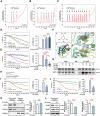
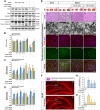
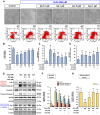
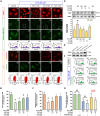
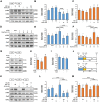
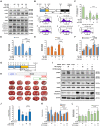

Similar articles
-
Hydroxysafflor yellow A alleviates cerebral ischemia reperfusion injury by suppressing apoptosis via mitochondrial permeability transition pore.Phytomedicine. 2021 May;85:153532. doi: 10.1016/j.phymed.2021.153532. Epub 2021 Feb 28. Phytomedicine. 2021. PMID: 33735723
-
Small-Molecule Inhibitors of Cyclophilins Block Opening of the Mitochondrial Permeability Transition Pore and Protect Mice From Hepatic Ischemia/Reperfusion Injury.Gastroenterology. 2019 Nov;157(5):1368-1382. doi: 10.1053/j.gastro.2019.07.026. Epub 2019 Jul 20. Gastroenterology. 2019. PMID: 31336123
-
Phosphorylation of cyclophilin D at serine 191 regulates mitochondrial permeability transition pore opening and cell death after ischemia-reperfusion.Cell Death Dis. 2020 Aug 19;11(8):661. doi: 10.1038/s41419-020-02864-5. Cell Death Dis. 2020. PMID: 32814770 Free PMC article.
-
Cyclophilin D-mediated Mitochondrial Permeability Transition Regulates Mitochondrial Function.Curr Pharm Des. 2023;29(8):620-629. doi: 10.2174/1381612829666230313111314. Curr Pharm Des. 2023. PMID: 36915987 Review.
-
Mitochondria and GSK-3beta in cardioprotection against ischemia/reperfusion injury.Cardiovasc Drugs Ther. 2010 Jun;24(3):255-63. doi: 10.1007/s10557-010-6234-z. Cardiovasc Drugs Ther. 2010. PMID: 20490903 Review.
Cited by
-
Potential enhancement of post-stroke angiogenic response by targeting the oligomeric aggregation of p53 protein.Front Cell Neurosci. 2023 Jul 18;17:1193362. doi: 10.3389/fncel.2023.1193362. eCollection 2023. Front Cell Neurosci. 2023. PMID: 37534043 Free PMC article. Review.
-
Small-Molecule Cyclophilin Inhibitors Potently Reduce Platelet Procoagulant Activity.Int J Mol Sci. 2023 Apr 12;24(8):7163. doi: 10.3390/ijms24087163. Int J Mol Sci. 2023. PMID: 37108326 Free PMC article.
-
Surface-Tailored Nanoplatform for the Diagnosis and Management of Stroke: Current Strategies and Future Outlook.Mol Neurobiol. 2024 Mar;61(3):1383-1403. doi: 10.1007/s12035-023-03635-x. Epub 2023 Sep 14. Mol Neurobiol. 2024. PMID: 37707740 Review.
-
Mitochondrial MPTP: A Novel Target of Ethnomedicine for Stroke Treatment by Apoptosis Inhibition.Front Pharmacol. 2020 Mar 25;11:352. doi: 10.3389/fphar.2020.00352. eCollection 2020. Front Pharmacol. 2020. PMID: 32269527 Free PMC article. Review.
-
Bridging the Gap Between Nature and Antioxidant Setbacks: Delivering Gallic Acid to Mitochondria.Methods Mol Biol. 2021;2275:161-172. doi: 10.1007/978-1-0716-1262-0_10. Methods Mol Biol. 2021. PMID: 34118037
References
-
- Baumgartner H. K., Gerasimenko J. V., Thorne C., Ferdek P., Pozzan T., Tepikin A. V., et al. (2009). Calcium elevation in mitochondria is the main Ca2+ requirement for mitochondrial permeability transition pore (mPTP) opening. J. Biol. Chem. 284 20796–20803. 10.1074/jbc.M109.025353 - DOI - PMC - PubMed
LinkOut - more resources
Full Text Sources
Other Literature Sources
Miscellaneous

